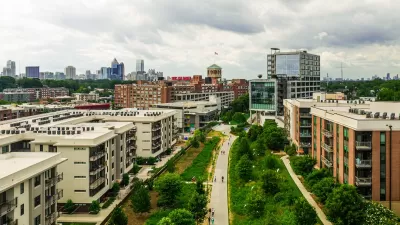Las Vegas and Southern Nevada are chock-full of planned communities. The region is also struggling with some of the harshest declines in property values in the nation. Though planned communities are seeing some sales, they are mainly in trouble.
"Planned communities have long been part of Southern Nevada's landscape, fueled in part by BLM auctions of federal land. Developers of Park Highlands, led by the Olympia Group that paid $639 million for 2,675 acres in November 2005, plan to build nearly 16,000 homes once they emerge from bankruptcy protection, their attorney Richard Holley said May 11.
The master-planned communities are paying the price for the sharp drop in demand for new homes. In 2006 at the end of the building boom, 35,406 new homes sold, but that dropped to 19,446 in 2007 and 9,965 in 2008, according to SalesTraq. Through this year's first quarter, 1,105 homes closed, putting the region on pace to have fewer than 5,000 new-home sales by the end of the year.
Despite these sluggish sales for new homes, planned communities are taking a bigger chunk of the overall sales than a year ago.
In 2008 only 45 percent of new-home closings were in planned communities, including 42 percent in the first quarter. In this year's first quarter, 54 percent of the closings were in planned communities - typically defined as large tracts under the control of a single developer and select homebuilder partners."
FULL STORY: Master planned, but in trouble

Maui's Vacation Rental Debate Turns Ugly
Verbal attacks, misinformation campaigns and fistfights plague a high-stakes debate to convert thousands of vacation rentals into long-term housing.

Planetizen Federal Action Tracker
A weekly monitor of how Trump’s orders and actions are impacting planners and planning in America.

San Francisco Suspends Traffic Calming Amidst Record Deaths
Citing “a challenging fiscal landscape,” the city will cease the program on the heels of 42 traffic deaths, including 24 pedestrians.

Defunct Pittsburgh Power Plant to Become Residential Tower
A decommissioned steam heat plant will be redeveloped into almost 100 affordable housing units.

Trump Prompts Restructuring of Transportation Research Board in “Unprecedented Overreach”
The TRB has eliminated more than half of its committees including those focused on climate, equity, and cities.

Amtrak Rolls Out New Orleans to Alabama “Mardi Gras” Train
The new service will operate morning and evening departures between Mobile and New Orleans.
Urban Design for Planners 1: Software Tools
This six-course series explores essential urban design concepts using open source software and equips planners with the tools they need to participate fully in the urban design process.
Planning for Universal Design
Learn the tools for implementing Universal Design in planning regulations.
Heyer Gruel & Associates PA
JM Goldson LLC
Custer County Colorado
City of Camden Redevelopment Agency
City of Astoria
Transportation Research & Education Center (TREC) at Portland State University
Jefferson Parish Government
Camden Redevelopment Agency
City of Claremont





























